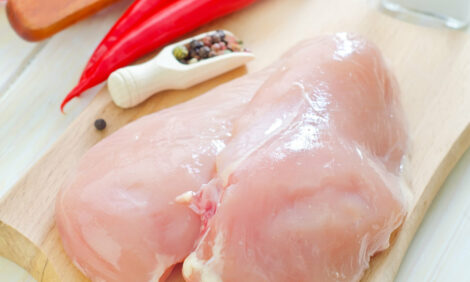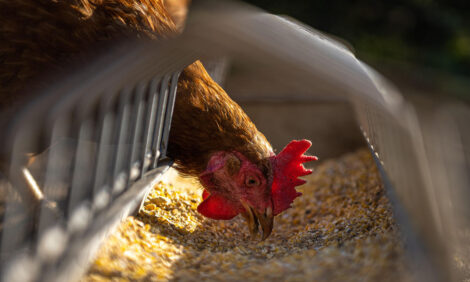



Effects of Extended Storage on Egg Quality Factors
D. R. Jones and M. T. Musgrove, Russell Research Center, Egg Safety and Quality Research Unit, USDA ARS - This article contains an abstract from the Poultry Science Association's August 2004 journal.Abstract
Eggs were collected from a single inline processing facility weekly for 3 wk (replicates). The eggs were stored at 4°C and 80% RH. Sampling began the day after collection and continued each week for 10 wk. During analysis, 24 eggs were examined for egg weight, albumen height, Haugh units (HU), shell strength, and vitelline membrane strength for each replicate.
Egg weight decreased (P < 0.0001) from approximately 61 to 57 g after 10 wk of storage. Eggs from the second replicate were significantly (P < 0.0001) heavier than the other replicates by an average of 3 g. On average, albumen height decreased with extended storage (P < 0.0001) from 7.05 to 4.85 mm. Albumen height was approximately 0.2 mm higher for the eggs in replicate 2 compared with the other replicates (P < 0.01).
Haugh unit values decreased during cold storage from 82.59 to 67.43 (P < 0.0001). There were no differences between replicates for HU values. No differences were detected for shell strength between replicates or during extended storage. A significant difference (P < 0.05) was found in detectable vitelline membrane strength between replicates, but this difference was less than 0.05 g.
The elasticity of the vitelline membrane decreased during storage (P < 0.01) remaining low after 6 wk. Extended cold storage led to decreases in egg weight, albumen height, and HU. However, average HU values were still within the range for grade A. Shell strength was not affected by extended storage. Vitelline membrane elasticity also decreased, which could lead to yolks more easily rupturing as consumers crack the eggs.
The results indicated that although the physical quality factors monitored in this study decreased during storage, egg quality was still acceptable beyond current recommended shelf life guidelines.
The study is published in Poultry Science 84:1774-1777, November 2005 edition
Source: Poultry Science - November 2005









